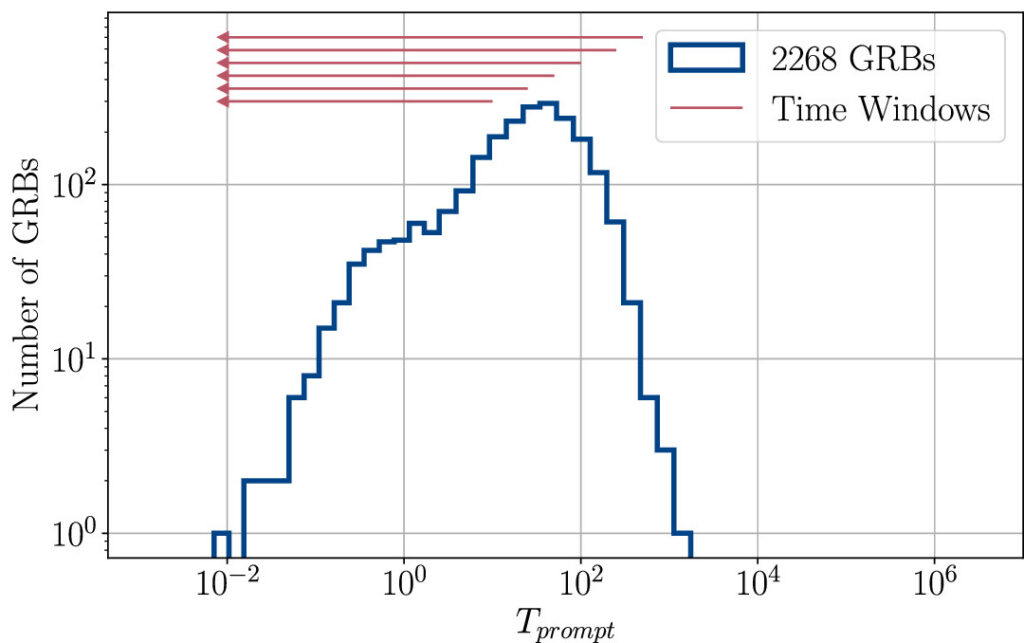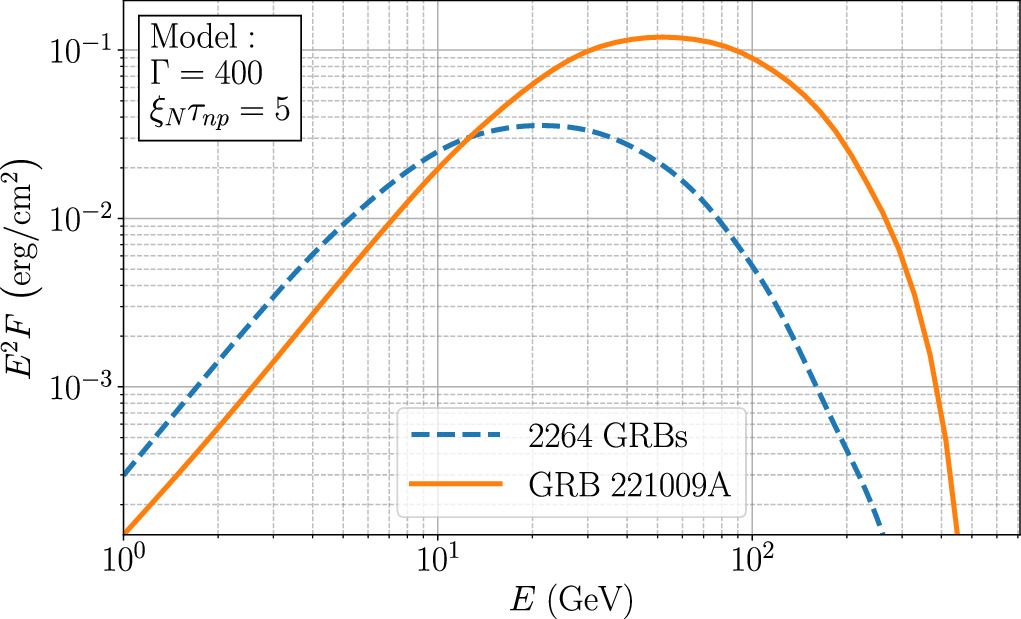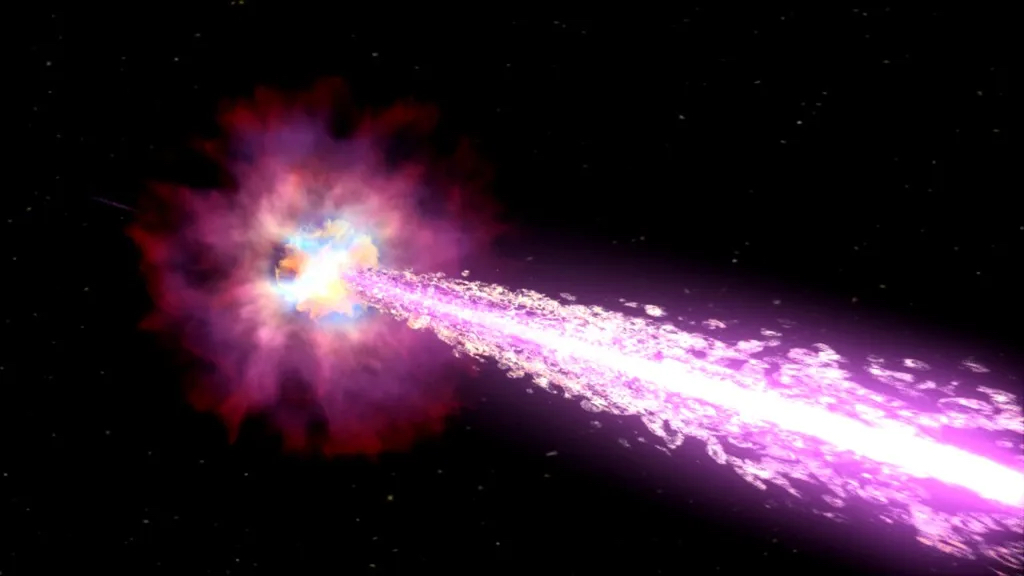The most powerful explosions in the universe are gamma ray bursts. The jet ejecting the fireball of particle plasma greatly accelerates the particles. Gamma-ray bursts are thought to arise from the merger of compact objects, neutron stars, or stellar-mass black holes (called short gamma-ray bursts, which last up to two seconds), or from collapsing supernovae (long gamma-ray bursts). Ray bursts lasting longer than 2 seconds are trapped). Gamma-ray bursts are the most powerful particle accelerators in the universe, and are extremely useful in studying interactions between particles, as well as enabling the discovery of new particles.
A group of researchers recently studied gamma-ray bursts to see if they are a source of ghostly particles called neutrinos. Neutrinos rarely interact with other particles, so they are very difficult to detect – they are like ghosts. The Ice Cube Neutrino Observatory detects neutrinos, but cannot determine their source. Since gamma-ray bursts produce neutrinos, the researchers combed through the IceCube data to see if there was a burst of high-energy neutrinos that occurred at the same time as the gamma-ray burst.
The researchers looked for neutrino coincidences in 2,268 bursts detected by IceCube's most sensitive neutrino detector, DeepCore. Each time window was scanned individually or together to look for faint signals that may not be visible in the individual time windows, but together could reveal a link between neutrinos and gamma-ray bursts.
For the first time, researchers identified the time windows before and after each explosion in which they looked for neutrinos. Because neutrinos rarely interact with matter, they can easily flow out of dusty regions, from which photons have difficulty escaping. This means that the neutrinos must reach Earth before gamma and other photons are emitted. The researchers scanned the entire sky and evaluated the probability that more neutrinos would arrive from the source location compared to the cosmic neutrino background.

The researchers then examined gamma-ray bursts that could be spatially and temporally linked to neutrino events. The probability of neutrino burst simultaneity has been examined for all events listed here. Thus, it has become possible to detect correlations between gamma-ray bursts and neutrinos, even if the events cannot be identified individually. Using this method, the researchers found no group of neutrinos that was more statistically significant than individual neutrinos that occurred within the time window of the gamma-ray burst.
The winning burst in the first search, i.e. the most significant association of neutrino and gamma burst, was GBR bn 140,807,500. (Because there are many gamma ray bursts Fermi-GBMTo and Swift BatIt would be very difficult to give each of them a unique name. Therefore, the explosion is given a number by which we can know when it was detected.) The neutrino event associated with the explosion occurs within 100 seconds of GRB bn 140807500, and its probability value, i.e. the probability that the coincidence is just a coincidence, is only 4.6×10-5. (A small p-value means that the neutrinos most likely came from a gamma-ray burst.)
So, at first glance, the neutrino emission in this case appears to arise from a gamma ray burst. However, we do not take into account the role of chance, i.e. the statistical possibility that if we examine enough gamma-ray bursts and neutrino events, there will be some that coincide randomly in space and time. With this in mind, the researchers came up with a much larger p-value of 0.097, meaning there is a one in ten chance that the gamma ray burst and neutrino emission are unrelated. In particle physics it is usually 3 x 10-7 The p-value of – is required to call associated events.
The brightest gamma-ray burst ever discovered at the time of writing. The researchers did not directly include this gamma-ray burst among the explosions they studied, but they made some predictions about how similar it is to other gamma-ray bursts. The brightest gamma-ray burst ever recorded, GRB 221009A, was so bright that, according to the research team's calculations, the expected neutrino signal would be 6-8 times the total neutrino signal expected from 2,264 gamma-ray bursts examined in the research. This is because the brightest gamma-ray burst ever recorded emits gamma rays much more powerful than other sources, accompanied by a stream of high-energy neutrinos. Their source in the sky can be determined much more precisely than the origin of the lower-energy neutrinos found in other gamma-ray bursts. This means that we can more definitely link the observed neutrinos to the location of the explosion.

Whether there are neutrino events coming from the brightest gamma-ray burst ever will require further research, but it seems likely, at least we can't say for sure that the gamma-ray burst could not have been accompanied by neutrino emission. The universe is often spoiled by astronomers with sudden events that resemble the brightest gamma-ray bursts. They facilitate the study of high-energy processes in the universe. Thanks to the Fermi-GBM and Swift-BAT observatories, we can observe more flares and explosions than before, giving us access to a huge database of gamma-ray bursts waiting to be studied.
source: AAS Nova
comment












































